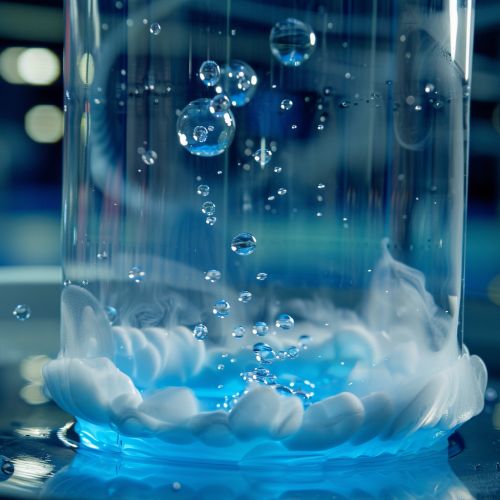Quantum Fluids
Introduction
Quantum fluids are a unique state of matter that exhibit macroscopic quantum phenomena. These fluids are governed by the principles of quantum mechanics and often display properties such as superfluidity, Bose-Einstein condensation, and quantized vortices. Quantum fluids are typically found at extremely low temperatures, where quantum effects become significant.
Types of Quantum Fluids
Quantum fluids can be broadly classified into two main categories: Bose-Einstein condensates (BECs) and Fermi liquids.
Bose-Einstein Condensates
Bose-Einstein condensates are formed when bosons, particles with integer spin, are cooled to temperatures close to absolute zero. At these temperatures, a large fraction of the bosons occupy the lowest quantum state, resulting in macroscopic quantum phenomena.
Properties of BECs
BECs exhibit several remarkable properties, including:
- **Superfluidity**: The ability to flow without viscosity.
- **Quantized Vortices**: The formation of vortices with quantized circulation.
- **Coherence**: The wavefunctions of the particles are coherent over macroscopic distances.


Fermi Liquids
Fermi liquids are composed of fermions, particles with half-integer spin, such as electrons, protons, and neutrons. Unlike bosons, fermions obey the Pauli exclusion principle, which prevents them from occupying the same quantum state.
Properties of Fermi Liquids
Fermi liquids exhibit properties such as:
- **Landau Quasiparticles**: Excitations that behave like particles with renormalized properties.
- **Fermi Surface**: A surface in momentum space that separates occupied from unoccupied states at zero temperature.
- **Collective Excitations**: Phenomena like zero sound and spin waves.
Superfluidity
Superfluidity is a phase of matter characterized by the complete absence of viscosity. This phenomenon was first observed in liquid helium-4 and later in helium-3 and BECs.
Helium-4 Superfluidity
Helium-4 becomes superfluid below a temperature of 2.17 K, known as the lambda point. In this state, it can flow through tiny capillaries without any resistance and exhibit the fountain effect.
Helium-3 Superfluidity
Helium-3, a fermionic isotope of helium, becomes superfluid at temperatures below 2.5 mK. The superfluidity in helium-3 is more complex due to the pairing of fermions, similar to Cooper pairs in superconductors.
Quantized Vortices
Quantized vortices are a hallmark of superfluidity and BECs. These vortices are topological defects where the circulation around the core is quantized in units of Planck's constant divided by the mass of the particle.
Vortex Lattices
In rotating superfluids, vortices arrange themselves into regular lattices. These vortex lattices have been observed in both helium superfluids and BECs.
Bose-Einstein Condensation
Bose-Einstein condensation occurs when a dilute gas of bosons is cooled to temperatures close to absolute zero, causing a large fraction of the particles to occupy the lowest quantum state.
Experimental Realization
The first experimental realization of a BEC was achieved in 1995 using rubidium-87 atoms. Since then, BECs have been created using various atomic species, including sodium and lithium.
Applications of Quantum Fluids
Quantum fluids have several applications in fundamental physics and technology.
Quantum Simulations
BECs and Fermi gases are used to simulate complex quantum systems, providing insights into phenomena such as high-temperature superconductivity and quantum phase transitions.
Precision Measurements
Quantum fluids are employed in precision measurements, such as atomic clocks and interferometers, due to their high coherence and stability.
